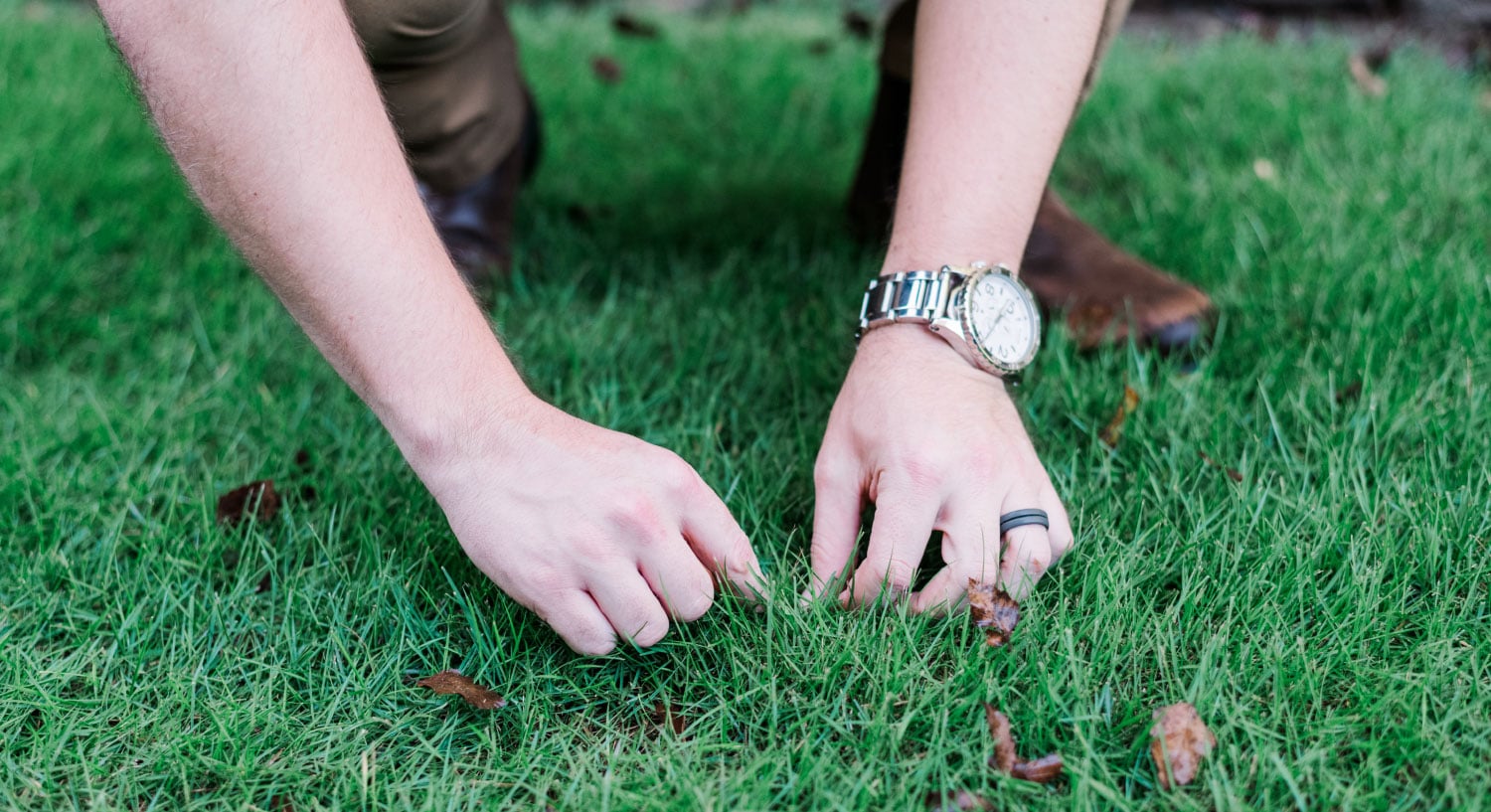Thatch is one of those words that’s thrown around in the lawn care world, but the term isn’t often explained to homeowners. Thatch is a very real phenomenon that can explain many of the reasons your yard may struggle. What is thatch? Why does it exist? Why is it problematic? What can I do about it? These are all valid questions, and we’ve got answers.
What Is Thatch?
By definition, thatch is a layer of decaying organic matter consisting of both living and dead plant material between the grass you see and the soil beneath it. Even that explanation can be a bit daunting, though. What organic matter? Why doesn’t it degrade?
The organic matter is a tangled mass of stems and stolons (specialized spreading stems). It may also include thick roots and rhizomes (a continuously growing horizontal underground stem that puts out shoots and roots). These materials are much harder than blades of grass, meaning they take more time to degrade. An accumulation of these stems, stolons, and thick roots results in a layer we refer to as thatch.
Why Does Thatch Exist?
Thatch is a byproduct of the growth habits in our hybridized turf-type grasses. A thin layer of thatch is normal, but excessive thatch is encouraged by poor cultural practices. Hardy stems and spreading rhizomes and stolons mean resiliency and recovery but also can result in an increased potential to create this thatch layer. Poor cultural practices such as excessive fertilization, frequent/shallow watering, and poor mowing techniques can result in poor soil conditions and thatch formation.
Why Is Thatch Problematic?
This tangled web of roots and stems magnifies the ill effects of environmental stressors such as drought or excessive rainfall. When combined with drought conditions, thatch creates spots that are hydrophobic, meaning the spots shed water instead of allowing it to be absorbed into the soil as usual. The result is dry spots where turf struggles for sufficient moisture, and it also means weed control products and fertilizers aren’t able to get into the soil profile as intended. The result is thin, unhealthy turf, often contaminated with weeds, and more likely to be stricken by diseases such as Dollar Spot.
Excessive moisture combined with thatch also creates unfavorable conditions for turf. Wet thatch can hold water, resulting in reduced oxygen for the roots and crown line of the turf. The result is weakness, thinness, and increased incidence of root-based fungal diseases such as Large Patch/Zoysia Patch.
What Can I Do to Control Thatch?
Good cultural practices can slow the development of thatch. Examples of good cultural practices are the following:
- Water properly. Watering deeply and infrequently encourages roots to grow downwards, including the thick, energy storing rhizomes. A good preliminary recommendation is an inch of moisture from either rain or irrigation over the course of 2-3 non-contiguous days.
- Mow appropriately. Mowing weekly at a height of 1.5” to 2” means cutting frequently enough at a height that limits damage from mowing. An extended period of time between cuts usually means the removal of too much turf at one time, resulting in damage. Short mowing heights require even more frequent cuts and are typically less dense.
- Fertilize correctly. Understanding fertilizers, the amount your turf needs, and the right times to apply certain nutrients can be daunting. At Nature’s Turf, we understand the Georgia red clay and climate because we are local; we are your neighbor. Our fertilization program is specifically designed to address the requirements of each turf type in our local soils and climate.
- Have your lawn aerated; core aeration improves soil and plant health. Aeration mechanically displaces thatch and bolsters soil health by assisting the degradation of thatch. Using specialized equipment to remove plugs of dirt, thatch, and turf, the soil has an opportunity to settle, resulting in better structure. Better structure means healthy roots, better water movement, better air exchange, and encouraged growth of microorganisms that, among other tasks, helps to degrade the tissues that constitute a thatch layer.
Important Takeaways
- Thatch is a layer of decaying organic matter made of both living and dead plant material that exists between the grass you see and the soil beneath it.
- Thatch is a byproduct of the growth habits in our hybridized turf-type grasses. A thin layer is normal, but excessive thatch is encouraged by poor cultural practices.
- This tangled web of roots and stems magnifies the ill effects of environmental stressors such as drought or excessive rainfall.
- Good mowing, watering, and fertility practices can slow the development of thatch.
- Core aeration improves soil and plant health. Positive plant health means less thatch production, and positive soil health means more microbes to degrade thatch.








